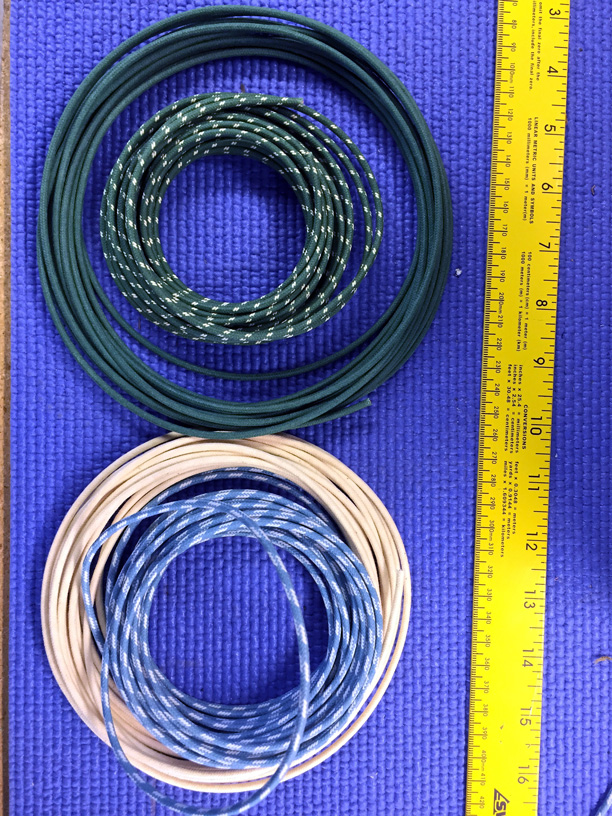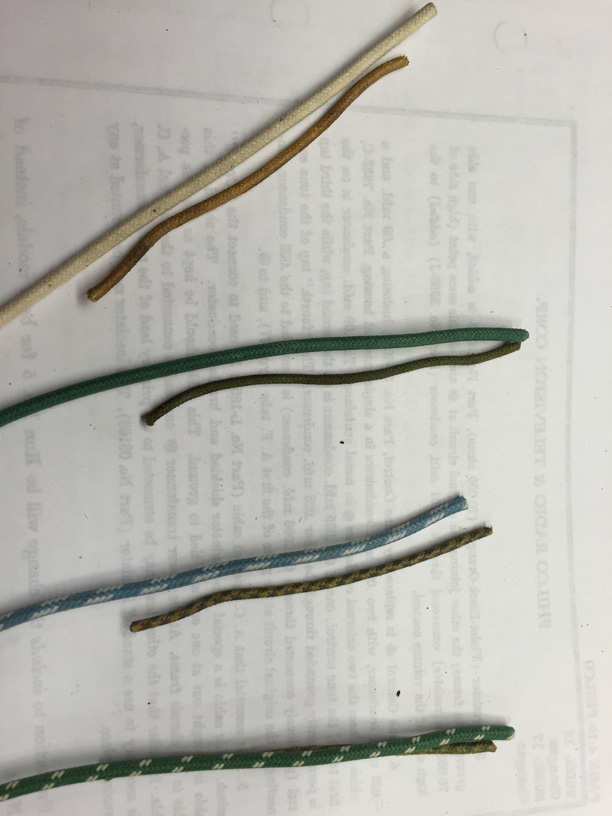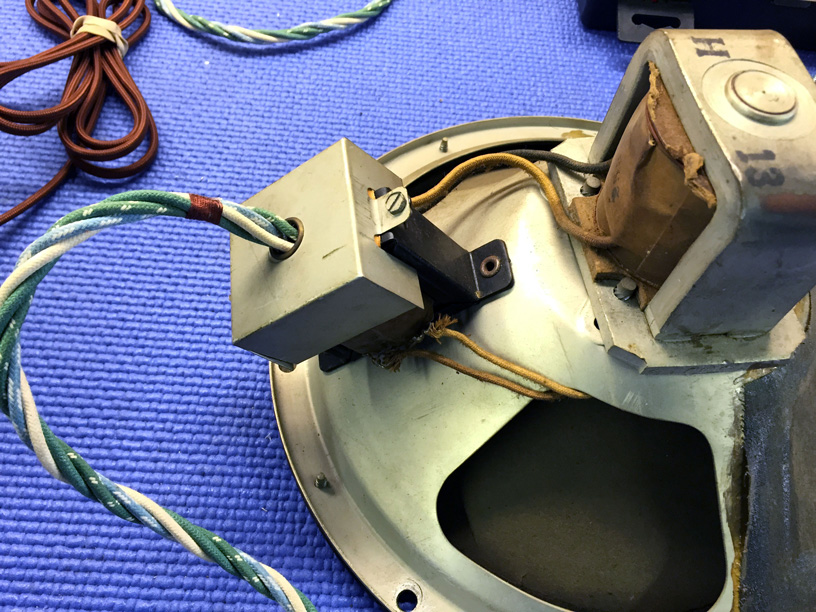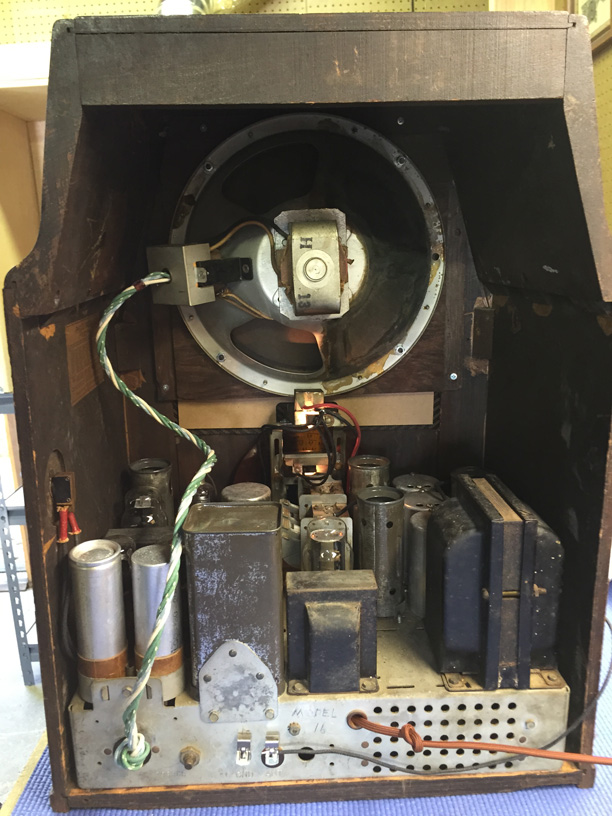07-21-2015, 11:18 PM
[DISCLAIMER: this worked for me but the wire mentioned here is *rated* at 50V - which means it is only tested by the manufacturer to that voltage]
Most of the Philcos I've repaired have wire harnesses to connect to the speaker. Often these wires aren't in great shape (missing insulation, patched with electrical tape) so of course I replace them with new cloth-covered wire. That gets the job done, but it doesn't look exactly like the original harness.
As an example, the original wire harness colors on my 16B tombstone:
I searched far and wide to see what kind of reproduction striped wire might be out there and came across Rhode Island Wiring Service - a small company that caters to antique automobile restoration. They manufacturer a wide variety of wire styles - but most are heavier gauge than those used in antique radios. I decided to take the plunge and order 25' in the closest style for each of my 16B's original colors (the wire cost 0.25/ft.):
18BPW 18ga Braided Primary Wire BU-4W
18BPW 18ga Braided Primary Wire W
18BPW 18ga Braided Primary Wire GN
18BPW 18ga Braided Primary Wire GN-2W
Decoder ring:
BU-4W = blue wire, 4 white tracers - kind of looks like original blue/white pattern
I would have preferred GN-4W = green wire, 4 white tracers, but they were out of that so I had to settle for GN-2W.
Anyway, here's what arrived in the mail:

And a side-by-side comparison between the old and new wire:

I created a new wire harness by measuring out 36" of each color and twisting them together. I then tied each end with a number of turns of brown thread bonded together with hot glue. Here's a comparison:

and the final result:


Most of the Philcos I've repaired have wire harnesses to connect to the speaker. Often these wires aren't in great shape (missing insulation, patched with electrical tape) so of course I replace them with new cloth-covered wire. That gets the job done, but it doesn't look exactly like the original harness.
As an example, the original wire harness colors on my 16B tombstone:
- white
- green
- green & white
- blue & white
I searched far and wide to see what kind of reproduction striped wire might be out there and came across Rhode Island Wiring Service - a small company that caters to antique automobile restoration. They manufacturer a wide variety of wire styles - but most are heavier gauge than those used in antique radios. I decided to take the plunge and order 25' in the closest style for each of my 16B's original colors (the wire cost 0.25/ft.):
18BPW 18ga Braided Primary Wire BU-4W
18BPW 18ga Braided Primary Wire W
18BPW 18ga Braided Primary Wire GN
18BPW 18ga Braided Primary Wire GN-2W
Decoder ring:
BU-4W = blue wire, 4 white tracers - kind of looks like original blue/white pattern
I would have preferred GN-4W = green wire, 4 white tracers, but they were out of that so I had to settle for GN-2W.
Anyway, here's what arrived in the mail:
And a side-by-side comparison between the old and new wire:
I created a new wire harness by measuring out 36" of each color and twisting them together. I then tied each end with a number of turns of brown thread bonded together with hot glue. Here's a comparison:
and the final result:



![[-] [-]](https://philcoradio.com/phorum/images/bootbb/collapse.png)


